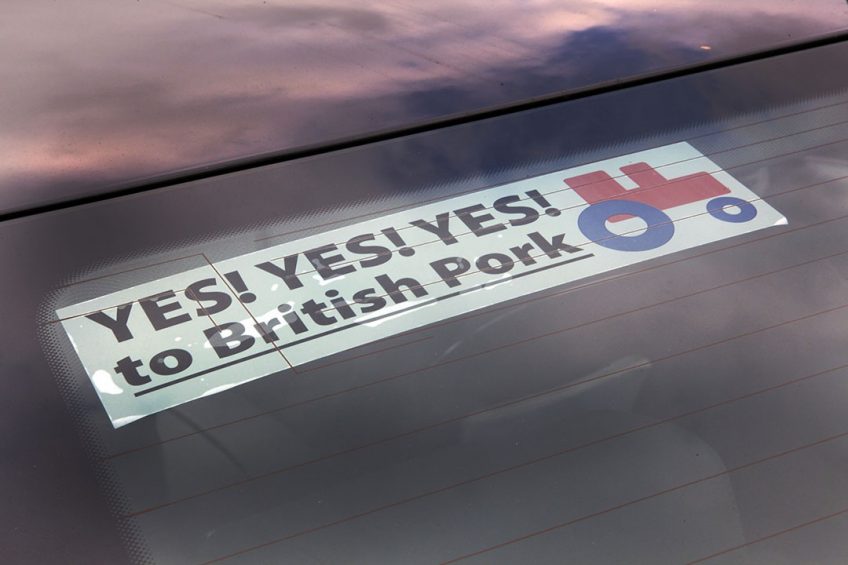Brexit and its effect on pig farmers

The United Kingdom is about to step out of the European Union. What will it mean for the country’s pig farmers and agriculture? Angela Christison of AHDB Pork and Karl Schneider, editorial director of Farmers Weekly, share their ideas.
In order to set the scene of just where the UK pig industry is at present, there are about 5 million pigs in the UK, of which around 400,000 are breeding sows. There are roughly 10,000 pig farms in the UK; around 90% of production comes from 1,000 assured farms including 10 corporate companies which account for 35% of the breeding sows.
In 2018, until November, the UK exported nearly 320,000 tonnes of pig meat, including offal. Although 55% of this went to the European Union, the EU accounts for 64% of pig meat exports by value, because lower value frozen product and offal tends to be exported to 3rd countries, outside the EU.
Around 70% of the pig meat produced in the UK is actually consumed in the UK. Nevertheless, it does import around 60% of the pig meat that it consumes. In 2018, until November, the UK pig meat imports totalled 903,000 tonnes, virtually all of which came from the EU. Only around half of this was fresh or frozen pork, 25% was bacon and the last quarter was other processed products such as sausages and ham.
How different scenarios could affect the UK pig industry
There is a lot on the line for the thousands of UK pig producers if Brexit is handled badly, but there could be some opportunities given a favourable outcome. Angela Christison is pork strategy director at the country’s Agricultural and Horticulture Development Board (AHDB). She sets out a few scenarios starting with how Brexit with a good deal could affect the UK pig industry.
She said: “On Brexit, given that the UK is a net importer of pork, our analysis shows that increased costs for importers could help support pig prices in the UK. In addition, being out of the EU may leave us in a more ‘nimble’ position to agree trade agreements around the world.
“Conversely, any increases in food prices may lead to an adjustment to tariffs, which would attract more imports and so have a downward pressure on pig prices. The net impact of the industry hinges on the degree of freedom of trade and tariff barriers.
Tariff free access to EU market
“For the agricultural and horticultural industry, the best possible outcome would see tariff free access to the EU market and there would be few people who wouldn’t favour an orderly transition, to allow adjustments to be made over time rather than abruptly,” she said.

However, if the UK hastily left the EU without a deal, this would severely disrupt trade, according to Ms Christison. She said: “A no deal Brexit where the UK unilaterally drops tariffs is the worst case scenario. Not least because there would be no ‘adjustment time’, a potential increase in imports and a shortage of labour.
“The potential impact is for pig meat exports from the UK to the EU to be severely disrupted, or even impossible for a while. This would disrupt the carcass balance, which is currently addressed through trading with multiple EU and non-EU markets and enables producers to optimise the value of each pig.”
Pork imports will be allowed under WTO rules
“Meanwhile, imports would be allowed under WTO rules. However, in this situation increased food prices may mean the UK government unilaterally reduces tariffs to allow sufficient product in and any lowering of tariffs would have to apply evenly to all potential markets.

Earlier, correspondent Chris McCullough also spoke to representatives of the UK’s National Pig Association on their views related to Brexit
“Whilst other standards exist which may stem imports of pig meat it would be likely that there would be a plentiful supply and the consequent downward pressure on prices,” she added.
New opportunities on the horizon?
No matter what the outcome of Brexit, the UK will need to focus on its core markets if its pig industry is to survive. Could there be some new opportunities on the horizon?
She said: “Even before the referendum took place, opening new markets and optimising those we already sell in to, is a key part of AHDB’s work on behalf of the pork industry.

What does the UK’s pig industry look like?
“In particular, opening access to non-EU markets has been a focus for AHDB’s market development activity for some time. The Asian markets, particularly China, are key market to optimise carcass balance, while other markets such as the USA for example offer different opportunities in terms of high end demand for certain British products.
“Being able to continue to have a range of market options to optimise full use of the carcass at the best possible values will help to support the industry in the long term,” she added.
On Tuesday, January 29, the amendments to the Brexit plan will be discussed in the UK’s House of Commons.











